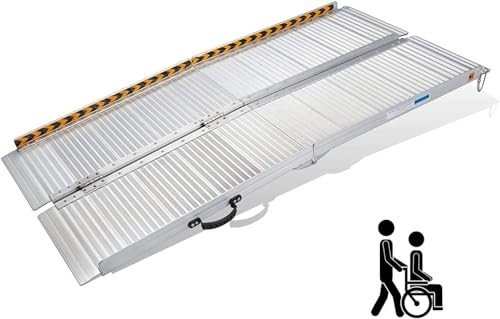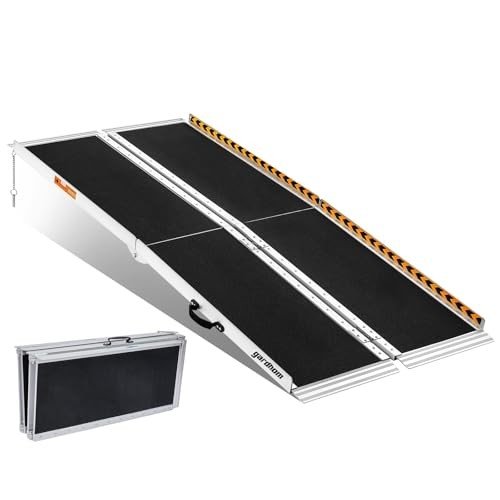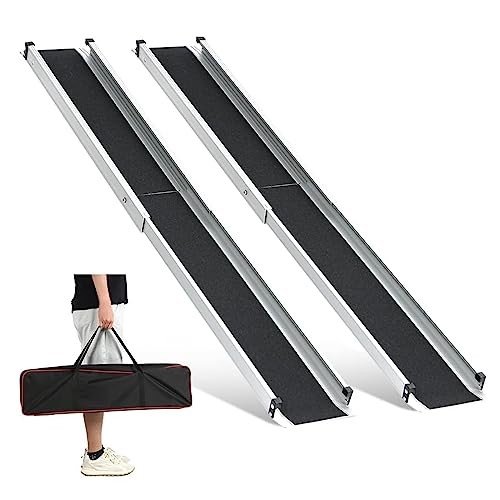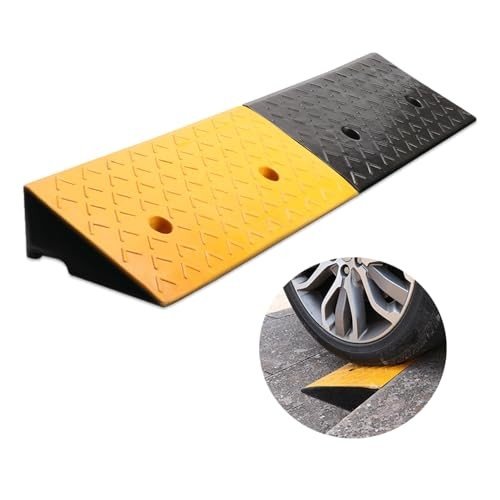Finding the right wheelchair ramp can really make life easier. These ramps offer smooth access for scooters or wheelchairs, whether you're getting in and out of your home or navigating public spaces. With a variety of styles and sizes available, you can choose the perfect ramp to meet your needs and boost your independence.
Wheelchair Ramps
Discover the perfect solution for easy access to any space with our range of wheelchair ramps
Product List
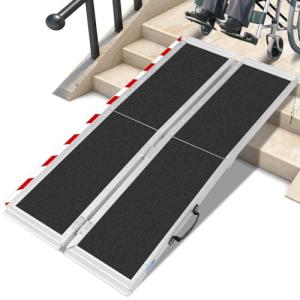
Foldable Aluminum Wheelchair Ramp
Liekumm
Product Review Score
4.11 out of 5 stars
53 reviews$326.17 $279.57
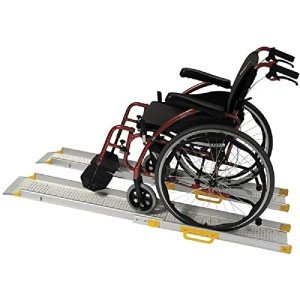
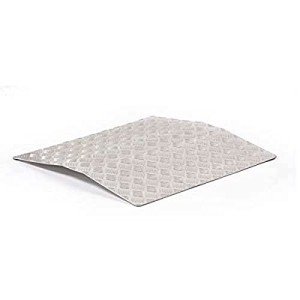
Drive Devilbiss Aluminum Ramp
Devilbiss Healthcare
Product Review Score
4.48 out of 5 stars
44 reviews$106.08
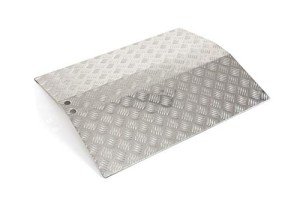
4cm Wheelchair & Scooter Ramp
The Ramp People
Product Review Score
4.69 out of 5 stars
30 reviews$127.30
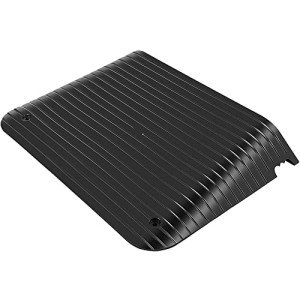
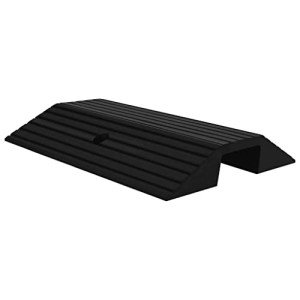
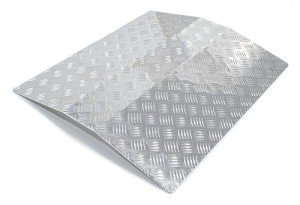

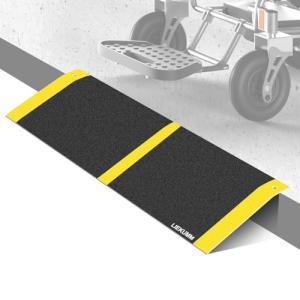
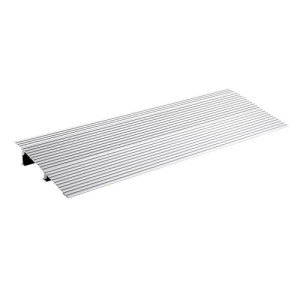
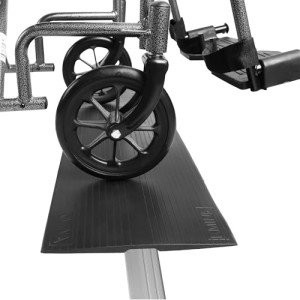
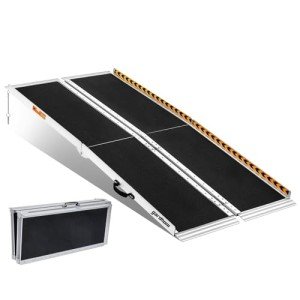
5FT Aluminum Wheelchair Ramp
Gardhom
Product Review Score
4.92 out of 5 stars
204 reviews$241.55 $226.56
Wheelchair ramps are an essential component of accessibility for individuals with mobility challenges. As more public spaces and private residences aim to accommodate people with disabilities, the importance of wheelchair ramps cannot be overstated. This blog post will explore the different types of ramps available, their design features, the legal standards governing them, and exactly how they improve navigation for wheelchair users.
Types of Wheelchair Ramps
There are several types of wheelchair ramps, each serving different needs and environments. Below is an overview of the most common types:
| Ramp Type | Description | Ideal Use Case |
|---|---|---|
| Permanent Ramps | Built into the structure of a building, these ramps provide a sturdy and long-lasting solution. They can be constructed from concrete, wood, or metal. | Public buildings, homes |
| Portable Ramps | Lightweight and easy to transport, portable ramps can be used temporarily or in various locations. They can be made from aluminum or plastic. | Events, temporary access |
| Threshold Ramps | Designed to bridge small height differentials, these ramps are ideal for doorways and thresholds. | Homes, offices |
| Folding Ramps | These ramps can fold in half or tri-fold for easy storage and portability. They are often made from lightweight materials like aluminum. | Travel, outdoor activities |
| Modular Ramps | These ramps are composed of interlocking parts that can be assembled into various configurations, offering flexibility for different access points. | Adaptable situations |
Key Features of Wheelchair Ramps
When selecting a wheelchair ramp, it is essential to consider various design features to ensure safety and usability. Below is a list of critical features that should be assessed:
-
Slope Ratio: The slope of the ramp is crucial for safety and comfort. The Americans with Disabilities Act (ADA) recommends a ratio of 1:12 (1 inch of height for every 12 inches of ramp).
-
Width: Ramps should be at least 36 inches wide to accommodate average-sized wheelchairs comfortably.
-
Surface Material: The ramp surface should be non-slip to prevent accidents, especially in wet or icy conditions. Options include textured rubber, grooved metal, or treated wood.
-
Weight Capacity: A robust ramp should accommodate not just the weight of the wheelchair user but also any potential additional load, such as equipment or passengers. Typical weight capacities range from 600 to 800 pounds.
-
Handrails: Adding handrails to a ramp can provide additional support and safety. Regulations often require handrails for ramps over a certain height or length.
Legal Standards and Compliance
In the United States, wheelchair ramps must comply with the ADA, which sets standards to ensure accessibility in public spaces. Below are some of the primary regulations regarding wheelchair ramps:
| Regulation Type | Requirement |
|---|---|
| Slope and Rise | Maximum rise of 30 inches; a slope ratio of 1:12. |
| Width | Minimum 36 inches in clear width. |
| Surface Texture | Must be stable, firm, and slip-resistant. |
| Handrails | Required on ramps that are greater than 6 inches in height. |
| Landings | Landings are required at the top and bottom of ramps, measuring at least 60 inches wide. |
The Importance of Wheelchair Ramps
Wheelchair ramps play a vital role in promoting inclusivity and independence for individuals with mobility impairments. Here are some reasons why they are indispensable:
-
Accessibility: Ramps allow individuals in wheelchairs to access buildings, parks, malls, and other public spaces that may otherwise be challenging or impossible to reach.
-
Safety: Properly designed wheelchair ramps reduce the risk of accidents, making it safer for users to transition from different elevations.
-
Independence: Ramps empower individuals with disabilities by enabling them to navigate spaces without needing external assistance.
-
Legal Compliance: Adhering to legal standards for wheelchair ramps ensures that public institutions and private facilities are compliant with accessibility laws, promoting a culture of respect and inclusivity.
Frequently Asked Questions (FAQ)
1. What materials are best for wheelchair ramps?
Common materials for permanent ramps include concrete and treated wood. For portable ramps, aluminum and high-density plastic are popular options due to their lightweight nature and durability.
2. How do I determine if a ramp meets ADA standards?
To comply with ADA standards, check the slope ratio (1:12), width (at least 36 inches), and ensure that the ramp surface is non-slip. Familiarizing yourself with local accessibility laws can also help.
3. Can a wheelchair ramp be installed by the homeowner?
While some ramp installations are straightforward enough for DIY enthusiasts, it is recommended to consult a professional, especially for permanent constructions, to ensure safety and compliance.
4. How can I assess the required ramp length?
The length of the ramp can be calculated by multiplying the height that needs to be overcome by 12. For example, a rise of 24 inches would require a ramp that is at least 24 feet long.
5. Are portable ramps suitable for outdoor use?
Yes, portable ramps can be used outdoors; however, it’s essential to ensure they are made from weather-resistant materials to prevent damage from the elements.
In summary, wheelchair ramps are essential components of a more inclusive society, providing invaluable access to individuals with mobility challenges. The choice of ramp type, adherence to safety standards, and understanding of key features can make a significant difference in the overall experience of a wheelchair user. Whether you are designing a new building, modifying an existing structure, or exploring options for portable ramps, making informed decisions can enhance accessibility for everyone.
By investing in and maintaining wheelchair ramps, communities can foster a more vulnerable society where everyone, regardless of their physical ability, can navigate and thrive.
